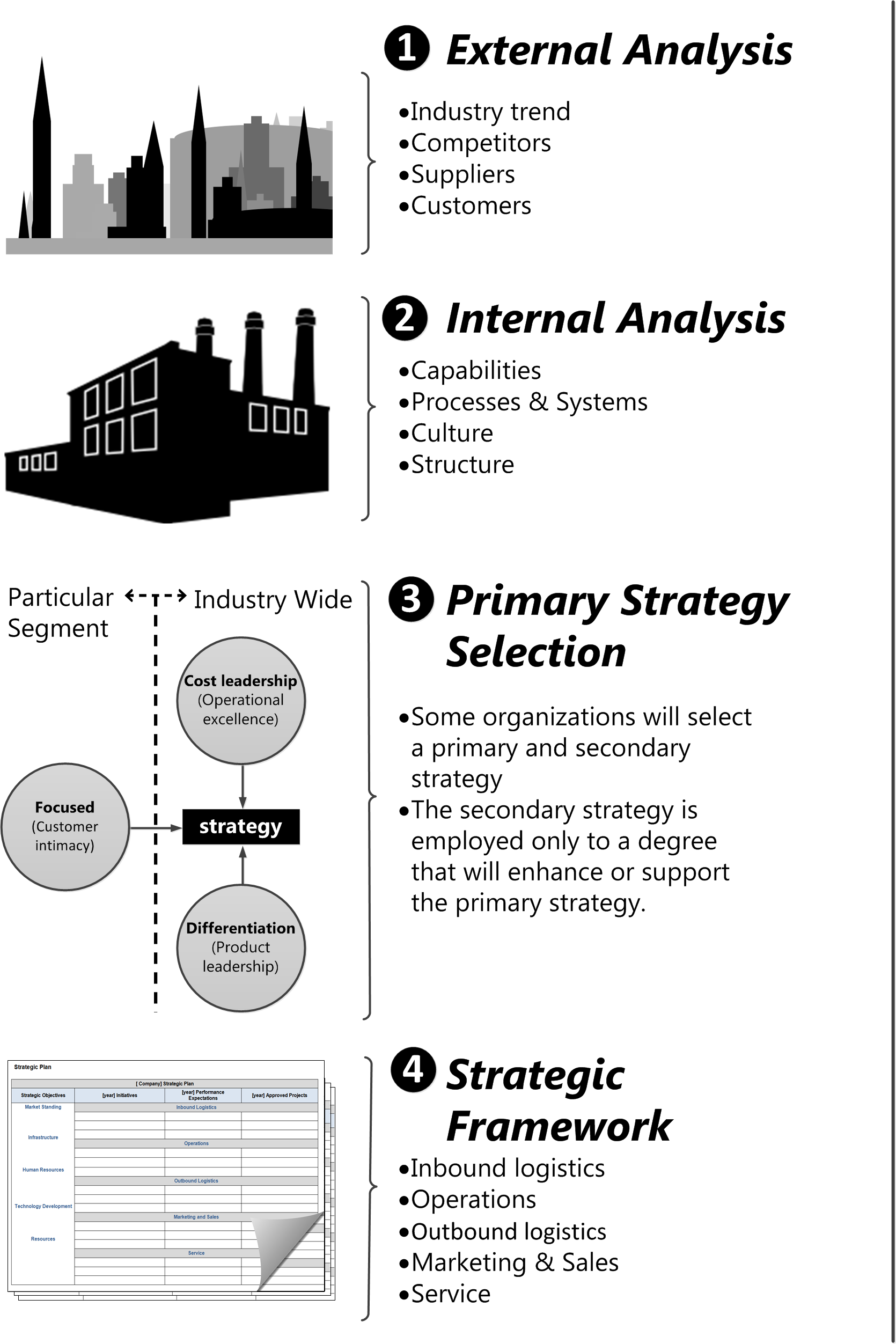
Everyone is in business for two reasons. That is to attract customers and sustain profitability. How to achieve those and other personal goals begins with the development of a strategic framework. This framework is used to maintain direction and continuity for operational and project decisions.

Figure 1: Four steps in building a strategic framework
Your strategic framework and consequently your strategic portfolio will have a significant effect on your:
- Rate of growth
- Operational policy, standards, and procedures
- Marketing media and content
- Product pricing
- Supplier negotiations and agreements
- Customer negotiations and agreements
A strategic framework is not a complex or large rambling document describing all the projects, and activities you feel are needed to reach a long-term goal. Rather, it is a carefully crafted framework used in the strategy implementation process for deciding on the right things to do in order to achieve a particular goal(s).
It is these decisions, made in the implementation phase, that will determine the projects, activities, and planned achievements that are needed to reach that goal. The strategy framework is intended to keep business decisions focused on its mission, to direct and prioritize the spending of time and money, and to provide a means of measuring progress towards the goal. Without a strategic framework to provide guidance when making these decisions, you’re just making it up as you go.
Developing the framework requires an in-depth understanding of the current internal and external operating environments, a prediction of future external business influences, the selection of a generic base strategy, and finally an achievable and measurable goal(s).
Before building your strategic framework you will need to collect and analyze information pertinent to your business. This is done in the first three steps of the strategy formulation process shown in figure 1. That information will be analyzed and finally crafted into your strategic framework in step 4.
A quick overview of each step
Step 1 is the analysis of the external factors that may influence your decisions on what actions you may take in achieving your goal(s). It consists of a comprehensive questionnaire which can be found in part 2 of this chapter - External Analysis. Needless to say that honest fact-based answers to these questions is important.
Step 2 is the analysis of the internal factors that may influence your strategic decisions on what actions you may take in achieving your goal(s). It consists of a comprehensive questionnaire which can be found in part 3 of this chapter - Internal Analysis. Needless to say that honest fact-based answers to these questions is important.
Step 3 is the selection of a primary strategy. Your decisions here will be based on the analysis of information collected in steps 1 and 2. It will provide consistency and reasoning for many day-to-day decisions. This activity leans heavily on the work of Michael Porter’s generic strategies. There are three generic strategies of which you will be asked to choose one. They are low cost, differentiation, and focus. Details on this can be found in part 4 of this chapter - Primary Strategy Selection.
Step 4 is the final: the development of your strategic framework. As stated above, this framework will provide guidance in making key decisions needed to direct the organization towards its goal. It will also provide the assessment criteria for developing the strategic portfolio of initiatives and projects. Details on this can be found in part 5 of this chapter - Your Strategy Framework.
Before delving into the details of parts 2 through 5 of this chapter, you may wish to review chapter 3 Strategy Implementation (Doing the Right Things) and chapter 4 Strategy Execution (Doing Things Right).
